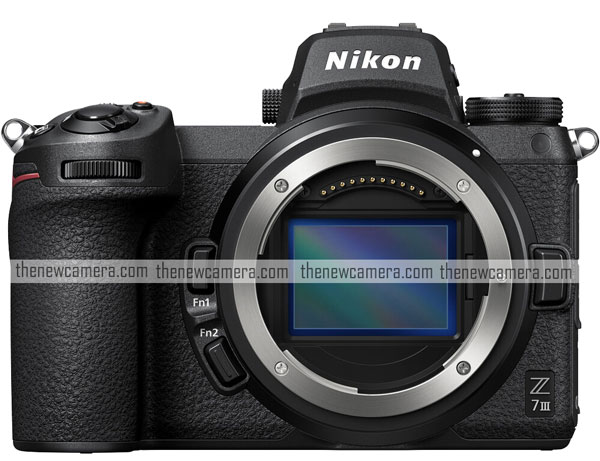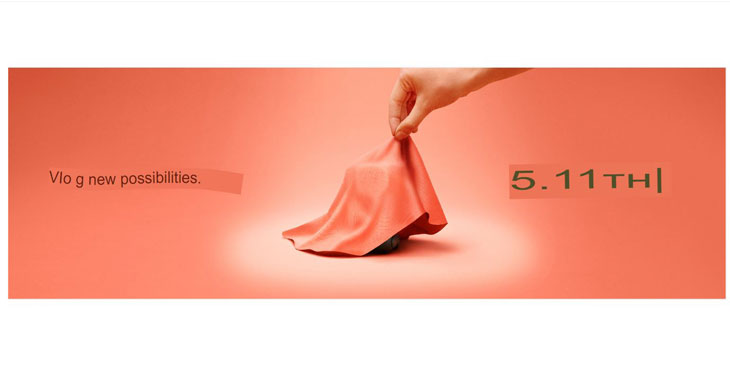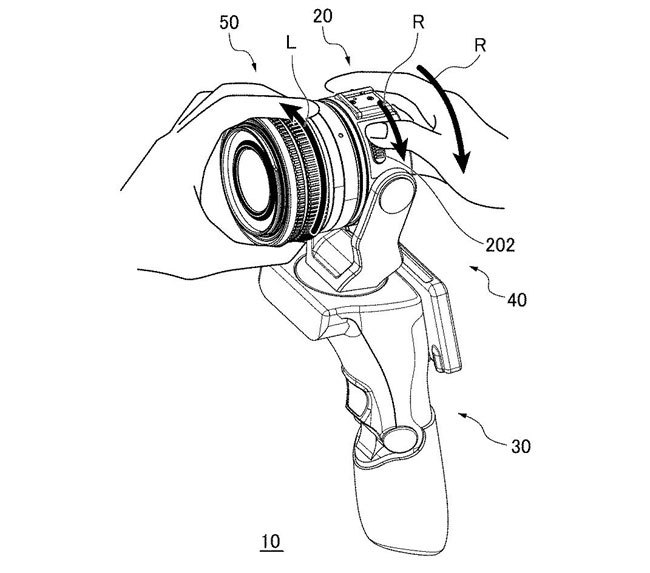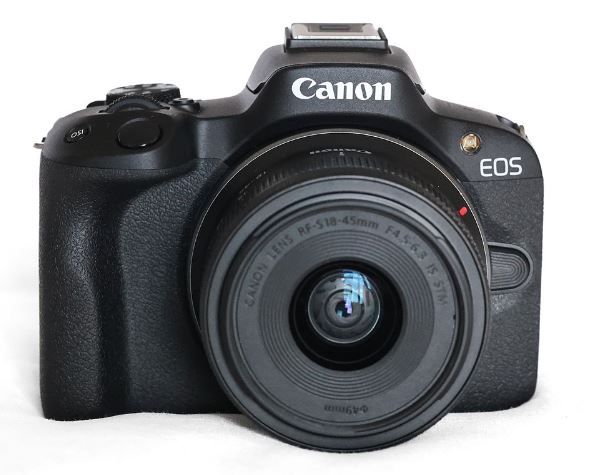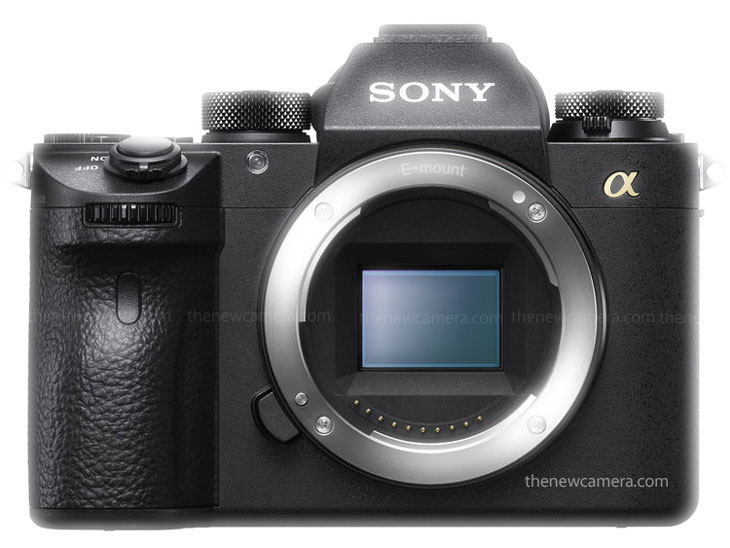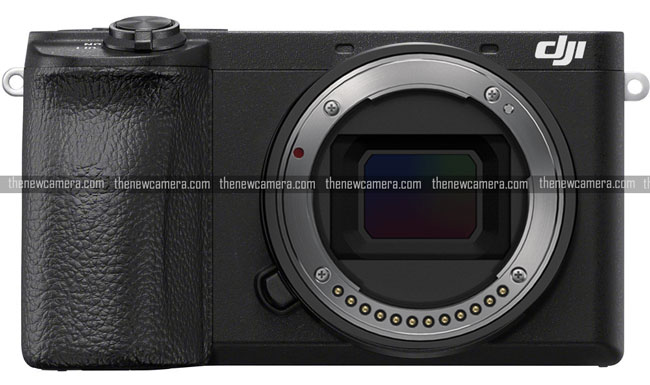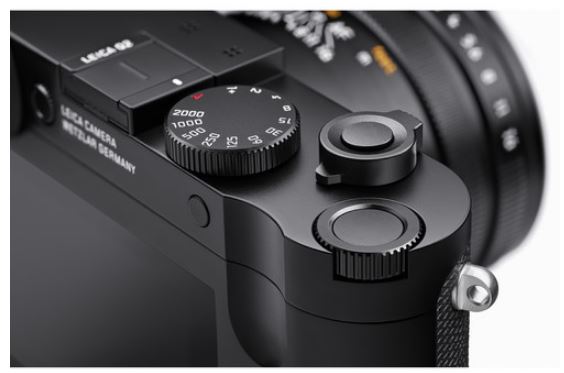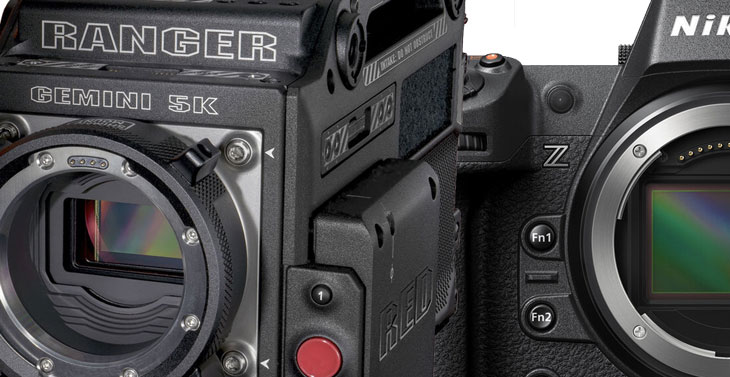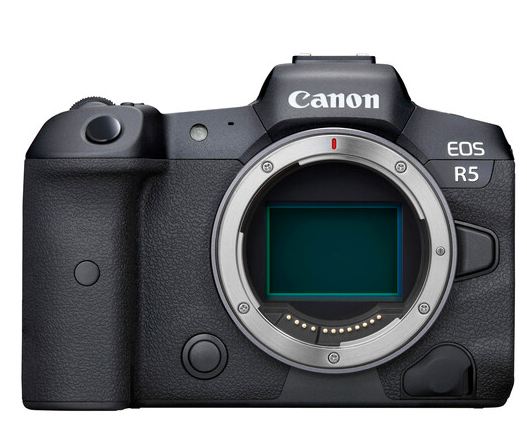
Nikon Z8 vs Canon R5 – Let’s compare the Nikon Z8 with Canon R5 – Nikon Z8 is a newly announced camera and features almost the same core specification that we have seen in the Nikon Z9, its better to say its a mini Nikon Z9. Due to its very competitive price range, the camera comes in direct competition with Canon’s most popular Canon R5 Camera. So, let’s start the comparison
10 Major Differences between Nikon Z8 vs Canon R5
We are here talking about the Major difference between the two and not about the similar features
1. Nikon Z8 without shutter
The Nikon Z8 camera completely eliminates the shutter, just like the Nikon Z9, but it is a welcome step since Nikon is using a stacked CMOS sensor with a readout speed of 3.7 milliseconds. Even if they eliminate the mechanical shutter from their camera, there will be no visible rolling shutter effect at high speeds.
Imaging
| |
Nikon Z8 |
Canon R5 |
| Sensor Resolution |
Actual: 52.37 Megapixel
Effective: 45.7 Megapixel (8256 x 5504) |
Actual: 47.1 Megapixel
Effective: 45 Megapixel (8192 x 5464) |
| Sensor Type |
35.9 x 23.9 mm (Full-Frame) CMOS |
36 x 24 mm (Full-Frame) CMOS |
| Image Stabilization |
Sensor-Shift, 5-Axis |
Sensor-Shift, 5-Axis |
| Built-In ND Filter |
None |
None |
| Capture Type |
Stills & Video |
Stills & Video |
2. Nikon 45 MP Stacked vs Canon 45MP FSI
Both cameras feature a 45-megapixel full frame sensor but the core difference exists between their technology, Nikon camera uses the same sensor that Nikon first introduced in the Nikon Z9. The 45 Megapixel Stacked CMOS Sensor and due to the presence of stacked CMOS tech, the read-out speed of the Nikon Z8 camera sensor is 3.7ms which is way too fast compared to the sensor of Canon R5 with 16.7ms read out the speed.
Undoubtedly, one of the biggest advantages of the Nikon Z8 camera is the STACKED CMOS sensor used inside it. If you are shooting fast-moving subjects such as wildlife, sports, racing cars, or flying birds while tracking them at high speeds, there is a very low probability that the camera will capture the rolling shutter effect as badly as the Canon R5. The readout speed of R5 is 16.7ms which can result in some bad rolling shutter effects at the fastest shooting speed. Therefore, if you are into sports and wildlife photography and interested in shooting fast-moving subjects, the Nikon Z8 would be a better choice. However, if you are not interested in Nikon cameras, it’s better to go with the Canon R3 which has a stacked CMOS sensor, instead of the Canon R5.
Exposure Control
|
Nikon Z8 |
Canon R5 |
| Shutter Type |
Electronic Shutter |
Electronic Shutter, Mechanical Focal Plane Shutter |
| Shutter Speed |
Electronic Shutter
1/32000 to 30 Seconds
0 to 900 Seconds in Manual Mode |
Mechanical Shutter
1/8000 to 30 Seconds
Electronic Front Curtain Shutter
1/8000 to 30 Seconds
Electronic Shutter
1/8000 to 0.5 Seconds |
| Continuous Shooting |
Electronic Shutter
Up to 20 fps at 45.7 MP for up to 1000 Frames (Raw)
Up to 30 fps at 45.7 MP
Up to 120 fps at 11 MP |
Mechanical Shutter
Up to 12 fps at 45 MP for up to 180 Frames (Raw) / 350 Frames (JPEG)
Electronic Shutter
Up to 20 fps at 45 MP for up to 83 Frames (Raw) / 170 Frames (JPEG) |
3. AUTOFOCUS
Let’s start with the autofocusing system and the calculations done by the camera per second for focus accuracy. The Nikon Z9 sensor, which is now being used inside the Nikon Z8 camera, has a speed of 120 calculations per second. Now, if you pick Canon’s fastest camera, the Canon R3, the camera is limited to 60 calculations per second. However, the calculation speed per second of the Canon R5 camera isn’t clear since the camera uses a front-side illuminated sensor. Therefore, the calculation speed of the R5 is expected to be inferior compared to the Canon R3.
Focus table
|
Nikon Z8 |
Canon R5 |
| Focus Type |
Auto and Manual Focus |
Auto and Manual Focus |
| Focus Mode |
Continuous-Servo AF, Manual Focus, Single-Servo AF |
Continuous-Servo AF, Manual Focus, Single-Servo AF |
| Autofocus Points |
Phase Detection: 493 |
Phase Detection: 1053 (5k+ DPAF points) |
| Autofocus Sensitivity |
-8.5 to +20 EV |
-6 to +20 EV |
Burst speed of both cameras. The MAX continuous shooting speed aka Brust speed of the Canon R5 is limited to 20 frames per second when using the electronic shutter and while using the mechanical shutter, it is limited to 12 frames per second. The mechanical shutter is recommended for those who do not want any kind of rolling shutter effect in their camera.
The MAX shooting speed of the Nikon Z8 camera reaches up to 120 frames per second but is limited to an 11-megapixel resolution. If you want to have a maximum speed at full resolution, then the camera allows you to shoot up to 30 frames per second in JPG mode. And if you like to shoot RAW images, then the camera limits you to 20 frames per second.
Best camera for Sports and Wildlife photography – if you want to track and shoot a moving subject like a flying bird, in that scenario Nikon z8 is more suitable for you due to its nature of construction. The Nikon Z8 camera allows you to use burst speed of up to 30 frames per second at full resolution and a maximum speed of up to 120 FPS when you are using 11 MP images. So technically, if we compare the specs of both cameras and the type of sensor technology used inside, the Nikon z8 camera is advanced compared to the Canon R5. WE HIGHLY RECOMMEND NIKON Z8 CAMERA for sports and wildlife. And if you do not want to go with a Nikon camera, as I said earlier, go with the Canon r3.
4. Core Difference in Sensor Tech
| ISO |
Z9 |
R5 |
| Photos (normal) |
64-25,600 |
100-51200 |
| Photos (extended) |
32-102,400 |
50-204,800 |
| Video (normal) |
64-25,600 |
100-25600 |
| Video (extended) |
64-102,400 |
100-51200 |
I like the Way the Nikon Z8 camera pushes the BASE ISO 1 stop more than of the Canon R5, resulting in a better Dynamic range. Which is highly essential for High Resolution based camera like this.
Nikon Z8 and Nikon Z9 Sensor are the same | Hence we have selected the sensor of Nikon Z9 against the Canon R5. Let’s do a high-ISO image comparison between the two
As you can notice the difference in the ISO range of both the camera. The Canon R5 has a more extended (HIGH) ISO range and with Nikon Z8 you can push the ISO up to 32.
5. HIGH ISO TEST between CANON R5 and NIKON Z8

At ISO A6400 you can clearly see the capturing ability of the Nikon Z8 Stacked CMOS sensor, The Canon R5 camera image file looks slightly faded when compared to the Nikon Z8/Z9 45 MP stacked CMOS sensor
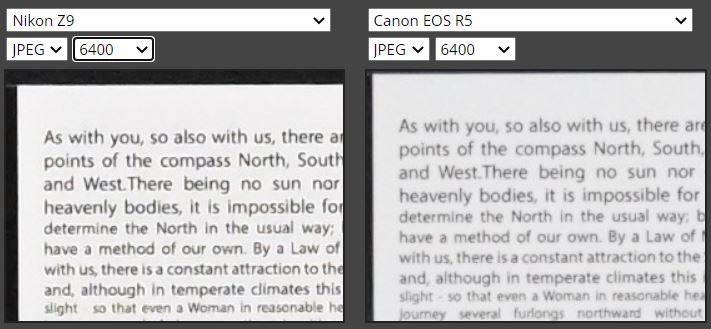
6. Best Camera for Video
As we know, the Nikon z8 camera is able to shoot 8K videos up to 30 frames per second, and the Canon r5 has the same capability. But the biggest advantage of the Nikon z8 is that you are able to record 8K videos in Apple ProRes 422 high-quality mode
The overheating issue of the Canon R5 camera is very well-known to us without a doubt, and that’s why we have included it in this comparison despite the massive effort done by Canon with firmware updates. The issue remains unresolved, and the camera tends to overheat quickly if used in hot and humid weather conditions and when recording at high settings such as 4K high-quality mode.
Both cameras are capable of recording 4K videos up to 120 frames per second and offer 8K 12-bit RAW video recording. Both of them also perform oversampling when creating 4K videos. However, if you select the Canon R5 high-quality aka oversampling mode, it may overheat quickly. In such cases, it is highly recommended to select the standard mode, where the camera uses pixel binning or line-skipping technology to create the 4K video.
| Internal Recording Modes |
H.265 4:2:2 10-Bit
UHD 8K (7680 x 4320) at 23.98/25/29.97 fps
UHD 4K (3840 x 2160) at 23.98/25/29.97/50/59.94/100/ fps
ProRes 422 HQ 4:2:2 10-Bit
UHD 4K (3840 x 2160) at 23.98/25/29.97 fps
H.265 4:2:0 8-Bit
UHD 4K (3840 x 2160) at 23.98/25/29.97 fps
H.264 4:2:0 8-Bit
UHD 4K (3840 x 2160) at 23.98/25/29.97 fps
1920 x 1080p at 23.98/25/29.97/50/59.94/100/ fps
Raw 12-Bit
7680 x 4320 at 59.94 fps |
H.265 4:2:2 10-Bit
DCI 8K (8192 x 4320) at 23.98/24.00/25/29.97 fps [680 to 1300 Mb/s]
UHD 8K (7680 x 4320) at 23.98/25/29.97 fps [680 to 1300 Mb/s]
UHD 4K (3840 x 2160) at 23.98/25/29.97/50/59.94/100 fps [170 to 1880 Mb/s]
H.264 4:2:0 8-Bit
DCI 8K (8192 x 4320) at 23.98/24.00/25/29.97 fps [470 to 1300 Mb/s]
UHD 8K (7680 x 4320) at 23.98/25/29.97 fps [470 to 1300 Mb/s]
DCI 4K (4096 x 2160) at 23.98/24.00/25/29.97/50/59.94/100 fps [120 to 1880 Mb/s]
Raw 12-Bit
8192 x 4320 at 23.98/24.00/25/29.97 fps [2600 Mb/s] |
| Codec |
ProRes 422 HQ*
H.265/HEVC
H.264/AVC |
H.265/HEVC
H.264/AVC
ALL-I |
| Sensor Crop Modes |
Super35 / APS-C
4K (3840 x 2160)
1080p (1920 x 1080) |
Super35 / APS-C
4K |
| Gamma Curve |
HDR-HLG |
Canon Log, Canon Log 3 |
| Recording Limit |
None |
Up to 30 Minutes |
| Broadcast Output |
NTSC/PAL |
NTSC/PAL |
| IP Streaming |
None |
Yes |
| Built-In Microphone Type |
Stereo |
Stereo |
| Audio Recording |
2-Channel LPCM Audio
2-Channel AAC Audio |
AAC Audio
LPCM Audio |
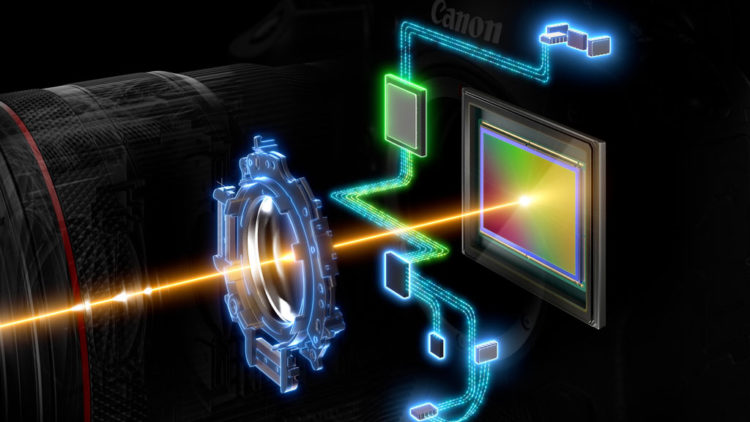
7. Image Stabilization System
Image stabilization of Canon is always better since R5 features IBIS up to 8 stops. However, remember that the 8th stops of image stabilization is not always effective on all the lenses you use with the R5. In the Nikon Z8, we have 5-axis stabilization up to 6 stops, so when comparing the two for handheld shooting, the Canon R5 is more recommended.
But at the same time, if you are a handheld wildlife photographer or sports shooter, then instead of giving priority to the sensor’s shift image stabilization system’s extra 3 stops, you have to give priority to the stacked CMOS sensor with 5 to 6x faster readout speed.
If you are a fashion and portrait photographer, then having 8 Stops IBIS will help you more for getting ur perfect shot. So, if all depends on your shooting style, preference, requirements, and budget.
8. Display and Electronic View-finder
The electronic viewfinder of Canon r5 is really very impressive with 5.76 million dots resolution. Nikon’s camera is using a 3.69 million electronic viewfinder, which is not recommended for a professional camera like this.
But at the same time, Nikon claims that the Nikon z8 camera’s viewfinder is one of the brightest in the market, with a 3000 nits display unit and 60Hz refresh rate.
The display screen resolution of both cameras is almost the same, and both cameras have a vari- angle display screen for compositional freedom.
9. Design tidbits
The Z8 and the R5 are very robust cameras and build like a tank by DSLR makers, with weather sealing and a mag alloy frame. The dimensions are very similar, but the Nikon is slightly heavier.
| Tripod Mounting Thread |
1 x 1/4″-20 Female (Bottom) |
1 x 1/4″-20 Female (Bottom) |
| Accessory Mount |
1 x Hot Shoe Mount |
1 x Hot Shoe Mount |
| Material of Construction |
Mag alloy |
Magnesium Alloy |
| Dimensions (W x H x D) |
5.6×4.6×3.2 | 144×118×83mm | |
5.43 x 3.84 x 3.46″ / 138 x 97.5 x 88 mm |
| Weight |
2.2 lb / 1040 g (With Battery, Recording Media) |
1.62 lb / 738 g (With Battery, Recording Media) |
Each camera has its own button layout and controls, but both of them are very simplified and easy to use. Both cameras can cover the sensor when powered off to protect it. While the R5 uses the curtains of the mechanical shutter, the Z8 has a mechanism design only for this purpose, which should also be more robust.
10. Cards and interface
The Z8 works with two cards, and they are both the CFexpress Type B standard. The R5 also has two slots, but one for CFexpress cards and one for SD UHS-II cards. Both cameras have USB Type C, microphone input, headphone output and HDMI socket. (in R5 we have mini and in Z8 we have full size)
Canon R5 at B&H Store
Nikon Z8 at B&H Store
We are updating this post regularly to make essential corrections
